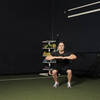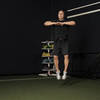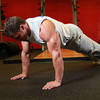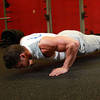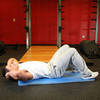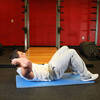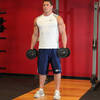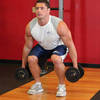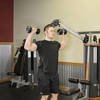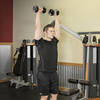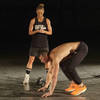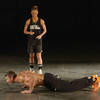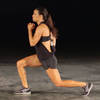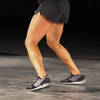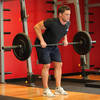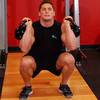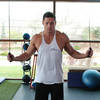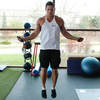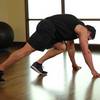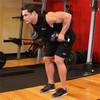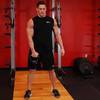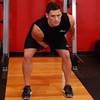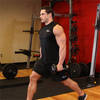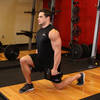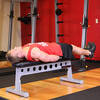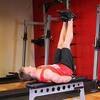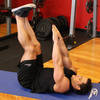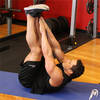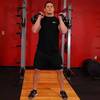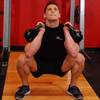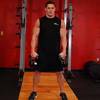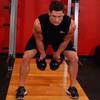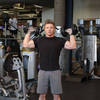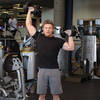In my years of training and coaching clients, I've heard every why-I-didn't-exercise excuse in the book. People fall off the wagon for a million different reasons, but the one pretext that comes up over and over is lack of time. Many people have the goal to exercise more, but fitting 30-60 minutes of gym time into a busy schedule can make accomplishing that goal quite difficult.
Most of us lead hectic lives. Work, family, travel, and other commitments are often so overwhelming that even the most motivated people can feel discouraged. I used to actually get a little angry at my clients because I didn't understand. I wondered how anyone's fitness goals could take a back seat. But, as time passed and my career evolved, I began to travel a lot. I found myself improvising my own workouts due to limited time and equipment. I began to understand that, sometimes, finding time and space for fitness is extremely hard.
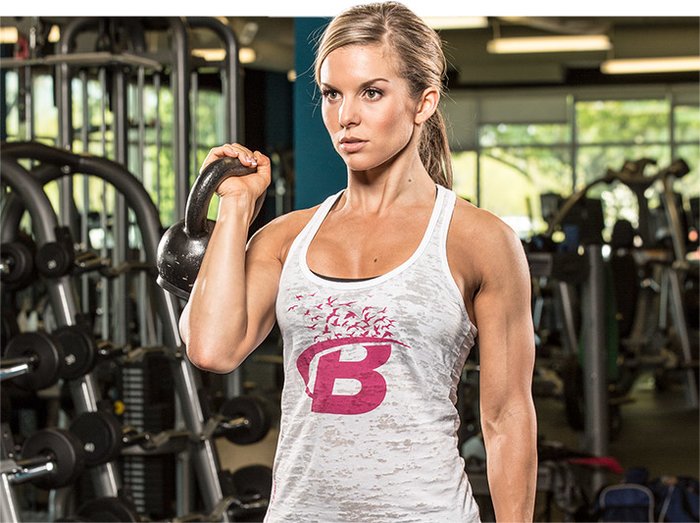
Many people have the goal to exercise more, but fitting 30-60 minutes of gym time into a busy schedule can make accomplishing that goal quite difficult.
For years I believed it was impossible to get an effective, complete workout from home. It was ingrained in my head that working out hard required heavy free weights and machines. But because I couldn't always get to a gym, I had to reconfigure my brain. I learned that you can get an effective workout at home, in a short amount of time, with very limited equipment.
Don't believe me? I'll show you how to do it.
No-Gym Hardcore Training
These training methods are difficult, intense, and require very little space or equipment. You can do them in your back yard, in the garage, or even in one of those tiny hotel fitness rooms.
The best part about every workout and style is that each can be tailored to your own fitness level. You can add resistance, increase pace, or lower rest periods to make the workouts more intense. You can also perform the workouts for time, and try to beat your score the next go around!
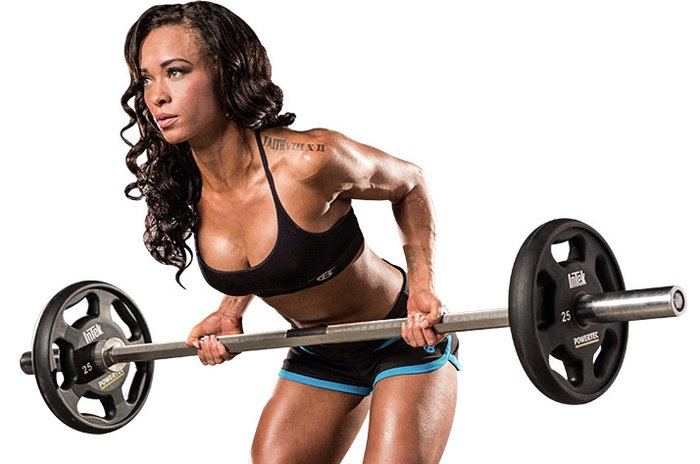
You can add resistance, increase pace, or lower rest periods to make the workouts more intense.
These are three of my favorite no-gym hardcore training methods. If you don't have a lot of time or can't get to the gym today, give one of these a try. Whichever workout you choose will be over in about 10 minutes and you'll be gasping for air!
Training Method 1: 15-1
This method of training is very deceptive. It doesn't look too bad, but once you begin and the reps start to add up, you'll see that you're in for a killer workout! The beauty of the 15-1 training method is that you can construct an endless variation of workouts.
For each 15-1 workout, you will need to pick two movements. You'll alternate between each movement without rest. Sounds simple, right? But here's the catch: each time you alternate movements, you'll decrease the reps of the first exercise, and increase the reps of the second exercise. You'll start exercise "A" with 15 reps and exercise "B" with 1 rep. Once you start, don't switch the order. Here's what it looks like:
15-1 Method
Though this is called the 15-1 training style, I usually advise beginners to start with a 10-1 approach and progress to 12-1 before going right into the 15-1. The key to this training style is finishing the workout as quickly as you can, so be sure to time your workout. If you fail or are unable to do any more reps, take note of when you stop or when you have to lower the weight. This will help you judge your improvements and provide tangible goals.
If you start with a 10-1 rep scheme and don't feel fatigued, try the 12-1 approach the next time you do the workout. If you do feel quite tired when you're done, continue with the 10-1 scheme until you can finish the workout 30-60 seconds quicker than you did your first time through. Keep progressing in this fashion until you get to the 15-1 approach. Once there, you can always make it more difficult by trying to go faster, using heavier weight, or performing harder exercises.
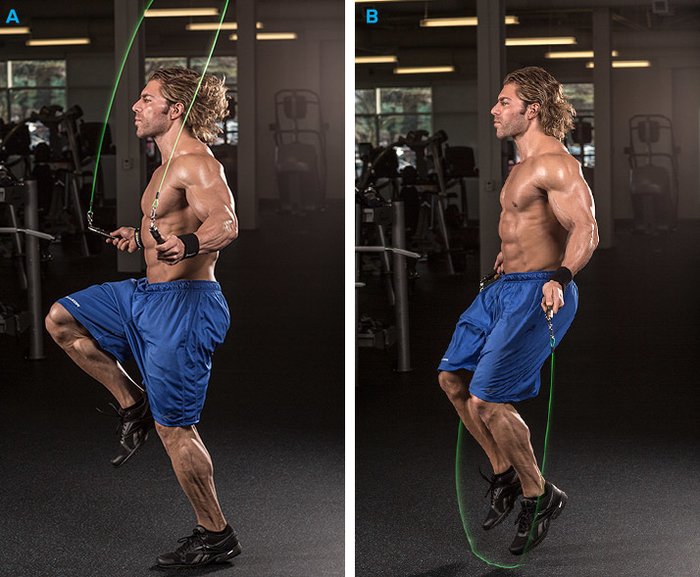
Jump Rope
For beginners, I suggest selecting an upper-body exercise and a lower-body exercise. This allows for more intensity and overall muscle stimulation. As you become fitter, you can do this workout with two upper-body or two-lower-body movements. Advanced trainers can choose two movements that work the same muscle group.
Here are some of my favorite combinations for all levels of training:
Beginner exercise pairings:
- Push-up and crunch
- Push-up and air squat
- Push-up and lunge
- Dumbbell row and crunch
- Dumbbell row and air squat
- Dumbbell row and lunge
- Standing dumbbell shoulder press and crunch
- Standing dumbbell shoulder press and air squat
- Standing dumbbell shoulder press and lunge
Intermediate exercise pairings:
- Push-up and dumbbell row
- Standing dumbbell shoulder press and dumbbell row
- Standing dumbbell shoulder press and triceps kick-back
- Push-up and dumbbell squat
- Dumbbell row and dumbbell squat
- Standing dumbbell shoulder press and dumbbell squat
Advanced exercise pairings:
- Burpee and dumbbell snatch
- Burpee and dumbbell squat
- Burpee and dumbbell thruster
- Burpee and standing dumbbell shoulder press
- Burpee and dumbbell row
Training Method 2: 21-15-9
This method is really effective because it can train your entire body and your cardiovascular fitness really quickly. To do this style of training, choose about 5 exercises and do them all for 21 reps, then 15 reps, and finally 9 reps, as quickly as possible and without rest.
Here's what a workout looks like:
- Barbell row: 21 reps
- Air squat: 21 reps
- Push-up: 21 reps
- Sit-up: 21 reps
- Burpee: 21 reps
- Barbell row: 15 reps
- Air squat: 15 reps
- Push-up: 15 reps
- Sit-up: 15 reps
- Burpee: 15 reps
- Barbell row: 9 reps
- Air squat: 9 reps
- Push-up: 9 reps
- Sit-up: 9 reps
- Burpee: 9 reps
The goal for this workout is, well, to finish the entire thing. It's also a great idea to do this workout for time, so you can track your progress. If you fail or have to use lighter weight, make a note so you know how you're improving. If you need to make this method more intense, go for speed or increase the weight. If you're doing this for the first time, start with lighter weight so you can get through the entire session.

As you improve your fitness, you'll be able to get through this workout faster and with fewer breaks.
As you improve your fitness, you'll be able to get through this workout faster and with fewer breaks. You'll also be able to increase the weight.
Here are a few of my favorite exercise groupings. Please note that there aren't really any exercise differences in a beginner- or advanced-level workout.
21-15-9 Workout 1:
- Dumbbell bent-over row
- Standing dumbbell shoulder press
- Squat
- Burpee
- Crunch
21-15-9 Workout 2:
- Dumbbell thruster
- TRX inverted row (dumbbell row)
- Lunge
- Tuck jump
- Push-up
21-15-9 Workout 3:
- Single-arm dumbbell snatch
- Squat
- TRX chest press (push-up)
- Lateral raise
- Toe toucher
21-15-9 Workout 4:
- Squat
- Jump lunge
- Burpee
- Standing dumbbell biceps curl
- Triceps kick-back
21-15-9 Workout 5:
- Thruster
- Dumbbell bent-over row
- Burpee
- Single-arm dumbbell snatch
- Tuck jump
Training Method 3: 10-12-15-18-20 Blitz
The 10-12-15-18-20 Blitz training style is designed to be a five-week progressive program, but it can also be utilized for single workouts. Unlike the other two methods we've been through, the Blitz method is based on working for time rather than for a particular number of reps. In essence, you'll do 3-5 exercises, one after the other, for a particular number of minutes without rest. Each week, you will work out five days, with two rest days. Your rest days cannot be successive.
Here's the layout:
10-12-15-18-20 Blitz Method:
- Week 1: 3 exercises for 10 total minutes
- Week 2: 3 exercises for 12 total minutes
- Week 3: 4 exercises for 15 total minutes
- Week 4: 4 exercises for 18 total minutes
- Week 5: 5 exercises for 20 total minutes
In Week 1, you'll choose three exercises and perform them back-to-back-to-back for 10 minutes. Completing one set of each exercise is called a round. Try to get as many rounds as possible (AMPRAP) in the 10 minutes you're working.
I call this method a "Blitz" for a reason. Go all out. Keep track of how many rounds and reps you complete, then try to beat that number the next time you perform the workout. Remember: Even one additional rep is an improvement.
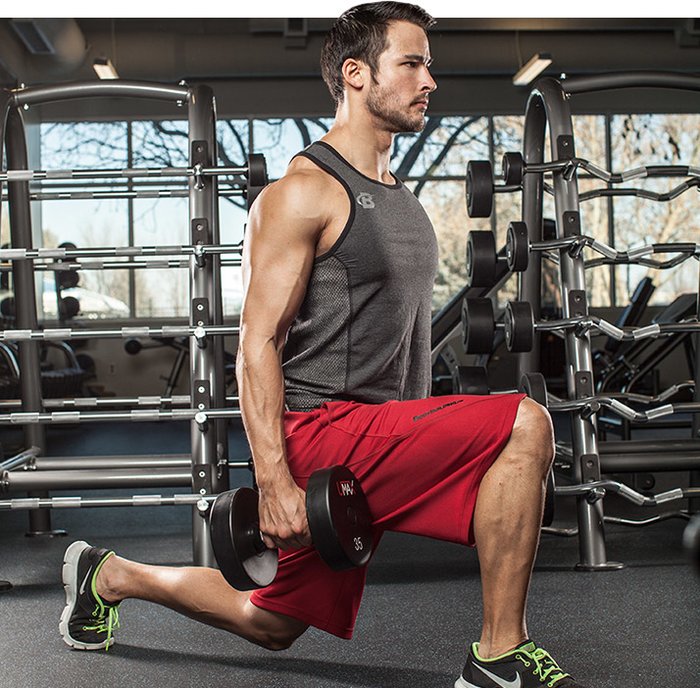
Unlike the other two methods we've been through, the Blitz method is based on working for time rather than for a particular number of reps.
You're free to choose the exercises and the number of reps you'll be performing, but I have a couple of pointers that may help you make your workouts more effective:
- Stick with 12-20 reps on most of your exercises. If you're doing bodyweight movements or something like jump rope, then you can increase the reps, but for the most part, stay in the 12-20 rep range.
- When selecting exercises, try to choose compound movements and always include at least one upper-body-dominant and one lower-body-dominant exercise.
Here is an example of the 5-week program:
Week 1
Week 2
Week 3
Week 4
Week 5
After Week 5, you can re-start the cycle or you can rotate in a couple workouts from the above schemes. If you opt to restart the cycle, choose the exercises that were the most demanding and do more of them. If you'd rather adjust the rep range, make sure you beat your rep count from last time.
I hope you enjoy all the workouts. If you have questions, please ask in the comments section below! I'd be happy to help.



